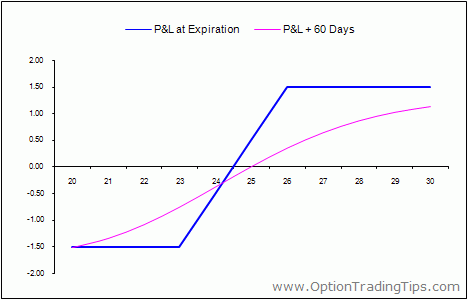Dear readers,
As promised, here is more information and a picture of how a collar actually looks like, hope you find it informative and allows you to better understand the previous post, and not make you all hot around the collar wondering what's going on!Basically, a collar is an exotic derivative based on 2 different types of options, to hedge against the risk of unlimited loss but at the same time, place a cap on the maximum gains possible, creating a ceiling and floor for possible payouts, which reduces risk...
Alright! Take good care! I'll be headed out station for the next 5 days! =D
note: As with all my other posts, my aim is to provide a very VERY basic background information about various finance theories in a light hearted and palatable way so as to provide you with substance for "coffee table discussions" should the topic turn to finance. Never is any of the posts in Sense & Cents meant as investment advice, nor will it ever be!
Collar
From: optiontradingtips.com
Components
Long underlying stock/future
Short OTM call option
Long OTM put option
Risk / Reward
Maximum Loss: Limited to the difference between the two strikes less the net premium paid or received less the loss on the stock leg.
Maximum Gain: Limited to the difference between the two strikes plus the net premium paid or received plus the gain on the stock leg.
If the net premium is a credit, i.e. you received money for the option legs, then your maximum gain is the difference between the strikes plus this amount (and then plus the profit from the stock leg). If the net premium was a payment then it is subtracted from the strike differential.
Characteristics
As you can see from the above payoff chart, a collar behaves just like a long call spread.
It is suited to investors who already own the stock and are looking to:
- increase their return by writing call options
- minimize their downside risk by writing put options
Covered calls are becoming very popular strategy for investors who already own stock. They sell out-of-the-money call options at a price that they are happy to sell the stock at in return for receiving some premium upfront. If the stock doesn't trade above this level, the investor keeps the premium.
The problem with covered calls is that they have unlimited downside risk.
The solution to this is to protect the downside by buying an out-of-the-money put.
This increases the cost as you will have to outlay more to purchase the put and hence lowers your overall return.


No comments:
Post a Comment